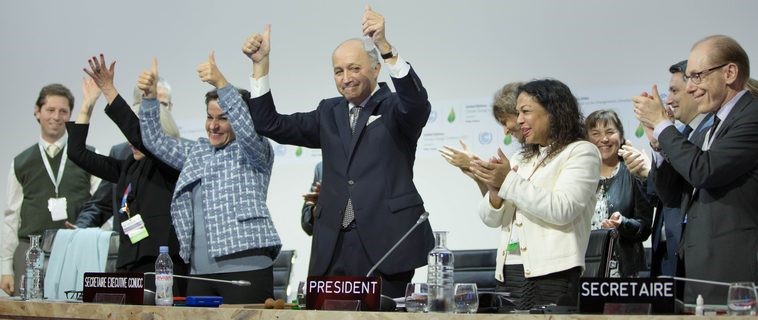The Paris Agreement adopted unanimously by the 195 countries members of the United Nations (UN) on December 12th, 2015 following the 21st Conference of the Parties (COP21) of the United Nations Framework Convention on Climate change (UNFCCC) constitutes a first signal of a worldwide political willingness to recognize the emergency to act now.
The Paris Agreement adopted unanimously by the 195 countries members of the United Nations (UN) on December 12th, 2015 following the 21st Conference of the Parties (COP21) of the United Nations Framework Convention on Climate change (UNFCCC) constitutes a first signal of a worldwide political willingness to recognize the emergency to act now.
In the preamble to this Agreement, section V, it welcomes the efforts of all stakeholders not bound by the Paris agreement to address and respond to climate change, including the civil society, the private sector, financial institutions, cities and other subnational authorities, such as states, provinces and territories part of a country. Without their direct commitment it would not be possible to reach the ambitious target of limiting the rise of the worldwide temperature clearly below 20C and to pursue the action in order to reach, if possible, a limit of 1,50C.
Taking into account the successful and complete implementation of each of the Intended Nationally Determined Contributions (INDC) submitted by 187 of 195 nations into the process of this Paris Agreement on climate change, the expected temperature rise would be limited between 2,70 and 30C. This target would take into account national differentiations in the efforts to be made by each country according to their INDC and constitute a type of bottom-up approach instead of a top down approach.
It will be interesting to observe in the following months how in each country, the national authorities will involve their stakeholders in the deployment of their INDC. Will they use the same bottom-up UN approach as used in the COP 21 or will they use something else? Will we see a combination of regulated and voluntary actions ? Since that in any case we do not have a Plan B, because we do not have access to a Planet B.
The Agreement, in its preamble recognizes the important role of providing economic incentives for emission reduction activities. In this sense, the voluntary carbon market would be a complementary and supplementary incentive of commitment and social awareness by all the civil society beyond any regulation or carbon pricing.
In order to limit the rise at 1,5oC, additional reductions will be required over the expected reductions associated to all INDC. Around 225 000 000 000 tonnes of GHG emissions for the 2015-2030 period. This amount represents over 4 times the worldwide anthropogenic GHG emissions of 2014.
Everything remains to be done; this agreement is only the first unanimous step towards a desired universal change.
To comment our blg : [email protected]
Martin Clermont, CEO, Will Solutions

